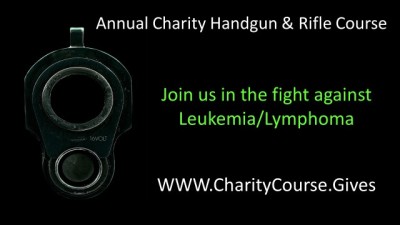Stricter Gun Laws Haven’t Made Communities Safer from Mass Shootings.
A trauma research team has developed a profile of commonalities among communities where mass shootings have occurred that includes a shortage of mental health professionals, a relative lack of socialization opportunities, higher rates of income inequality, and relatively high housing costs.
While the study supports others that have found that states with strict gun laws have less overall violent crimes, it also found these states actually have a higher risk of mass shootings.
The findings were presented today at the American College of Surgeons Clinical Congress 2018 in Boston.
The study, led by Stephen F. Markowiak, MD, a general surgery research fellow at the University of Toledo (Ohio), used data from the Federal Bureau of Investigation, the U.S. Census, Centers for Disease Control, National Institutes of Health, and Robert Wood Johnson Foundation to study social factors of communities where 155 mass shootings in the U.S. occurred.
This study defined mass shootings as those with four or more fatalities, excluding those with a clear motive, such as robbery or gang-related activities.
“In general, the communities in which these multiple-shooting events have historically happened are much less healthy compared with national averages,” Dr. Markowiak said.
The study results showed that communities in states with the strictest gun laws had a 53 percent greater risk of mass shootings. “The counties in the states that have strict gun laws, such as California and New York, actually have a high incidence of these multiple-shooting events, and that holds true even when you control for urbanicity,” Dr. Markowiak said. This finding may seem to contradict other studies of gun violence, but Dr. Markowiak explained that apparent discrepancy. “Our data agrees that stricter gun laws are associated with less overall violent crimes,” he added. “It’s just that these multiple-shooting events appear to be an exception to that rule.”
However, study researchers identified two types of gun laws that stood out as having a correlation with a lower incidence of multiple shootings: mandatory reporting of mental health records to the National Incident Criminal Background Check System and restrictions on open carry of firearms. Dr. Markowiak hesitated to conclude that these laws have a protective effect in preventing mass shootings. “The other laws that we looked at really did not have an effect,” he said.
Access to mental-health professionals is one of the key social determinants of communities at risk of mass shootings. “Looking at our data, the mismatch of mental health providers per capita appears to place more urban communities at risk—greater than the national median of 490 persons per provider,” Dr. Markowiak said.
Another key social determinant of at-risk communities was the average number of social interactions per person. “If you look at communities where these events occurred, the average individual had 10.5 to 11 people that they commonly associate with compared with an average of 13 or so close associations in communities where they didn’t occur,” he said. The study did not determine if this was the result of the rural or urban character of these communities, however.
The researchers also noted that people in at-risk communities engaged in less leisure-time physical activity, and the communities themselves were on average 30.7 percent less rural, 3.38 years younger, had a 3.07 percent higher incidence of overcrowding or lack of utilities, and had a higher ratio of income inequality.
Dr. Markowiak said that traditionally mass shooting incidents get a lot of attention because they come into the hospital as trauma. “But they really need to be looked at more from a public health perspective as to the types of services we are going to provide for the community and what the implications are for the community,” h said.
The goal of the study was to not promote any political position on gun violence. “We just wanted to see where the data was going to take us,” Dr. Markowiak said. “That’s what led to some of the more surprising findings.”
From a policy standpoint, the study pointed to a need for better national record keeping. “We know that research in the area of gun violence has been stifled dating back to the early 1990s due to Congressional inactions,” he said, referring to the Congressional mandate that bars the Centers for Disease Control (CDC) from studying gun crimes.
But the study also points to a need for more community involvement. “If we focus on making our communities healthier places where people have access to doctors and healthy spaces, and we restore a sense of community, then I think our project indicates we may be less likely to see these mass shooting events occurring,” Dr. Markowiak said.
Dr. Markowiak’s study coauthors are David G. Heidt, MD, FACS, of the University of Toledo Medical Center Department of Surgery, and Phillip J. Welch, PhD, of the University of Toledo and Bowling Green State University in Bowling Green, Ohio.
Source: American College of Surgeons
report at InsuranceJournal.com
Be sure to follow us Facebook, Instagram or Twitter, buttons on the right side of the page.
*Subscribe to our email Newsletter in the pop up subscribe window! Or at the bottom of the webpage. Don’t miss any articles!










